Abstract
Phage infection of Vibrio cholerae resulted in antigenic changes. A strain of biotype cholerae serotype Ogawa was converted into serotype Hikojima and gained the ability to synthesize antigenic factor C. Some phage-converted strains remained stable after subculture and were immune to superinfection with the same phage. The stable converted strains were lysogenic and released phage having a host range similar to the phage of the donor strain. Reinfection of unstable converted strains which had "lost" antigen C yielded types able to again synthesize this antigen. The polymyxin resistance character was expressed in the biotype cholerae strain after infection with some phage preparations. These polymyxin-resistant strains possessed three main characteristics of El Tor vibrios. The phage-induced changes described provide V. cholerae with the potential for innumerable genetic combinations.
Full text
PDF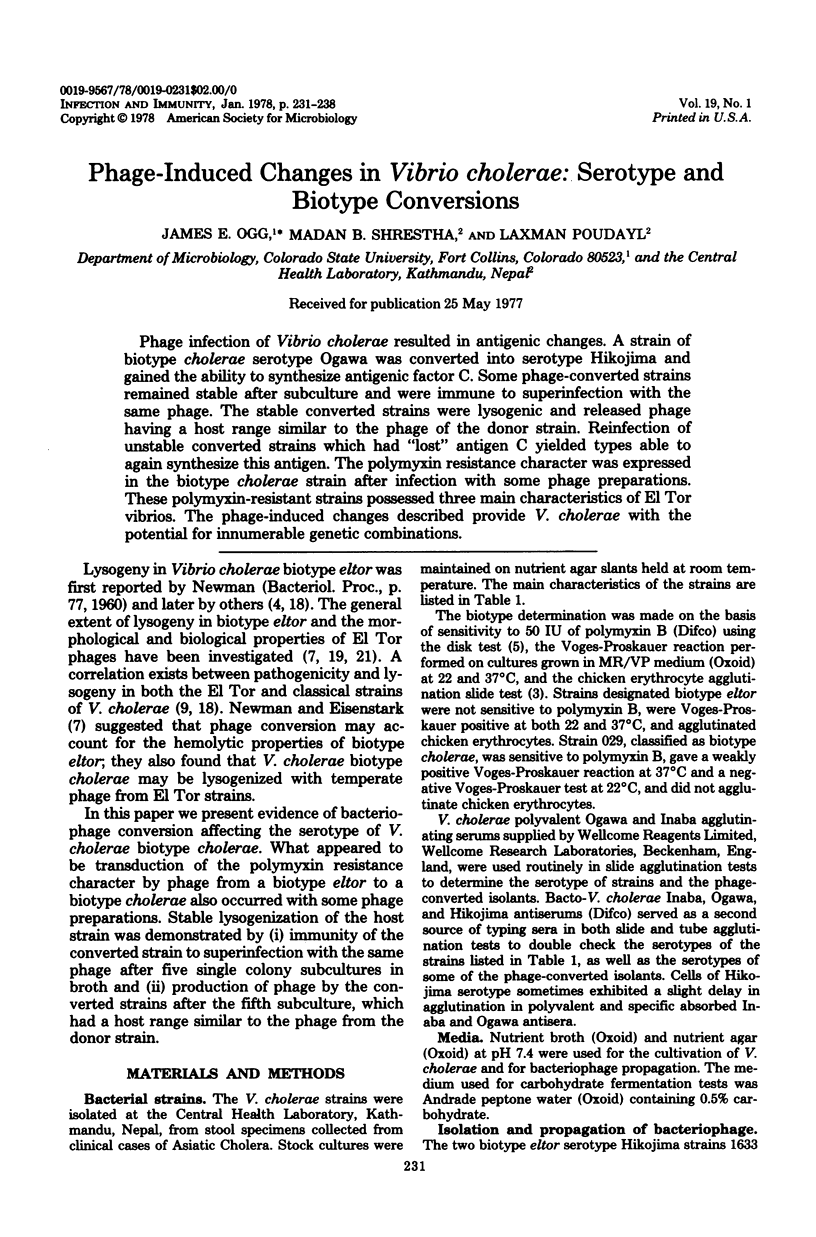
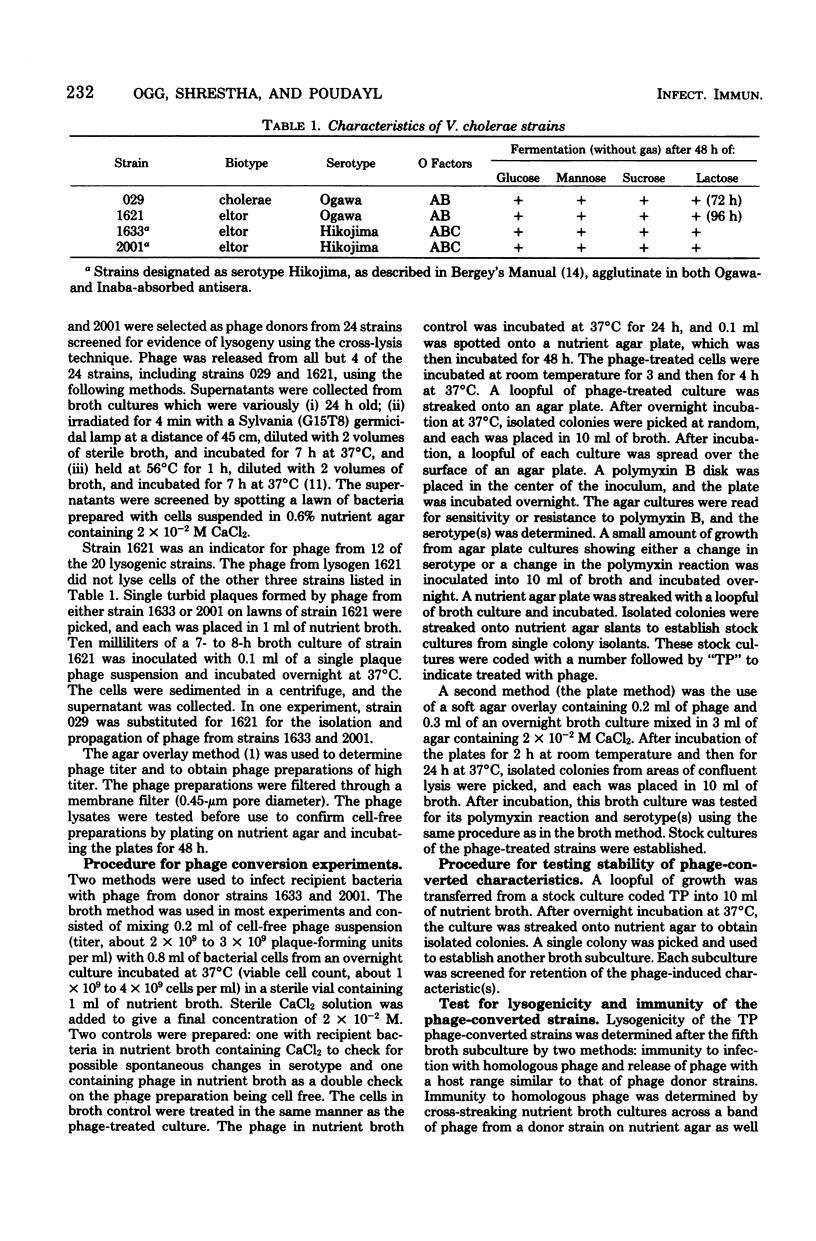
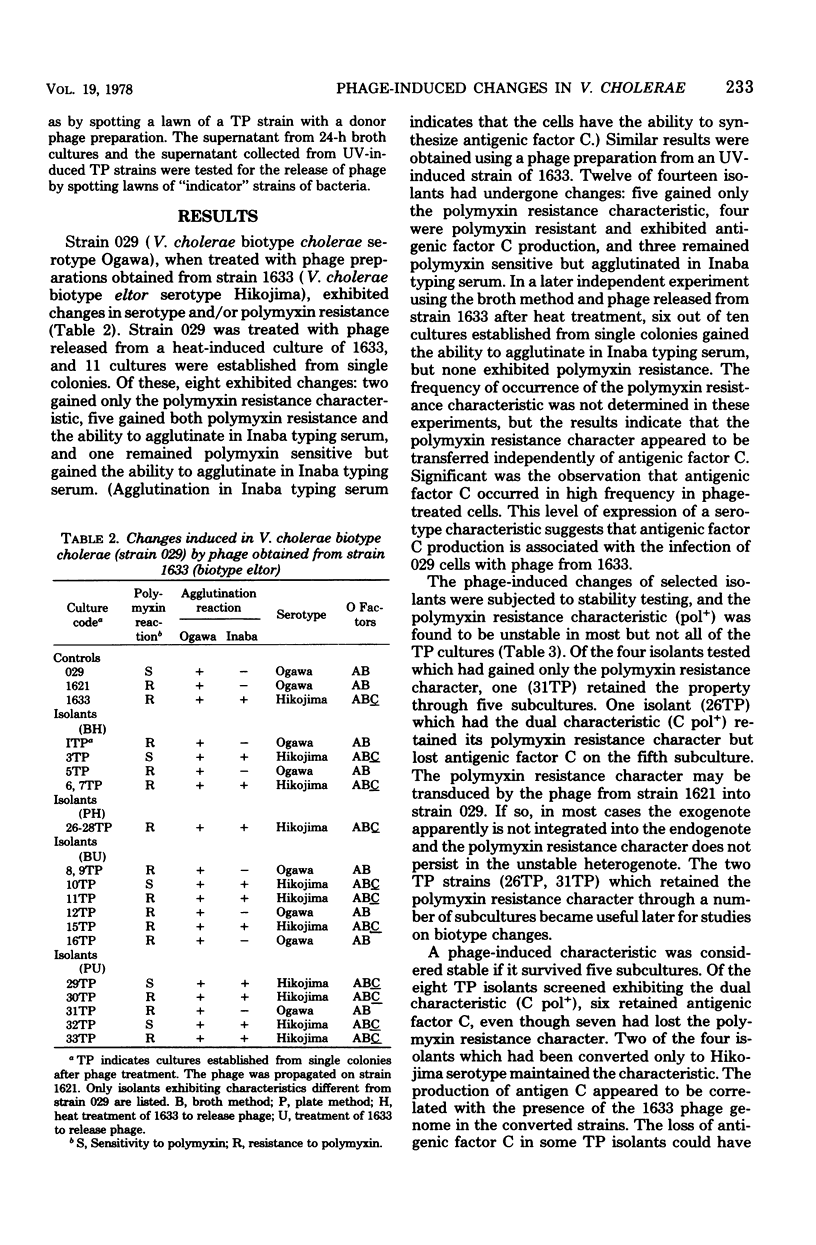
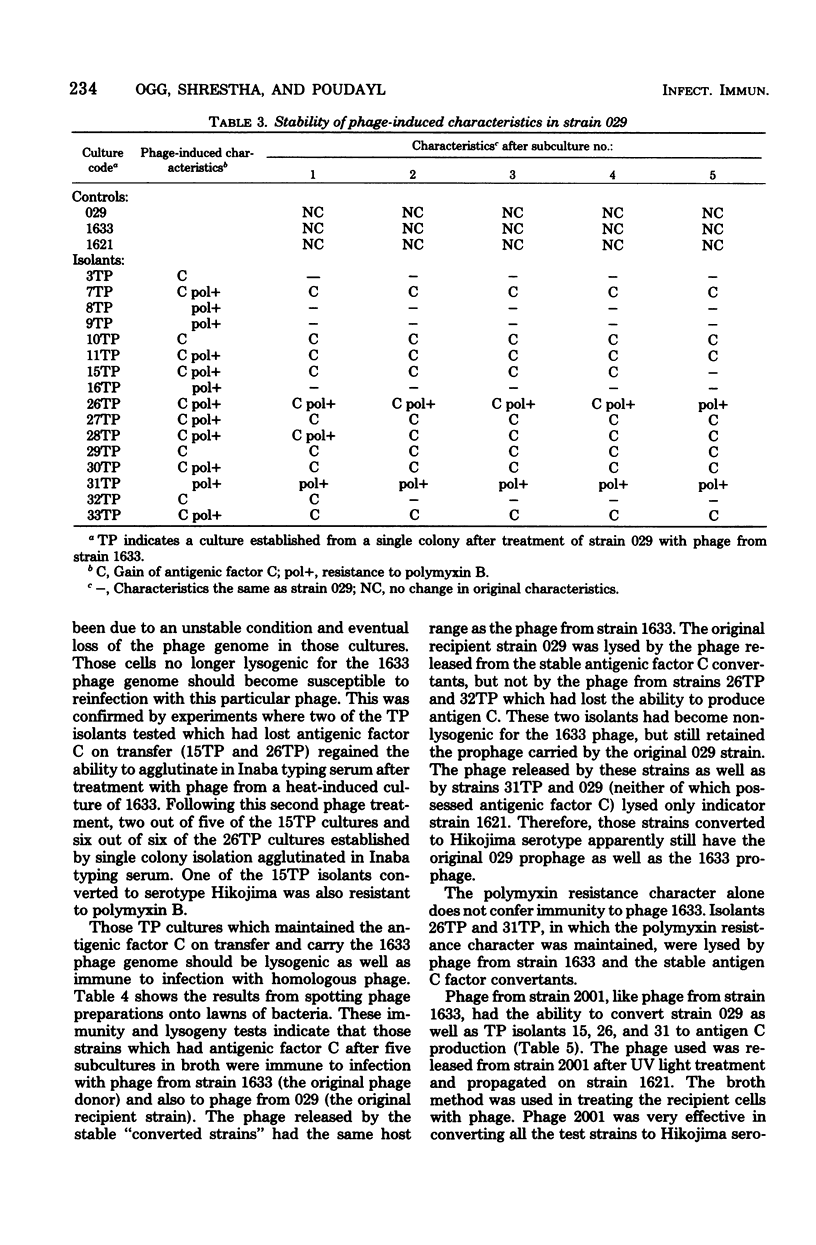
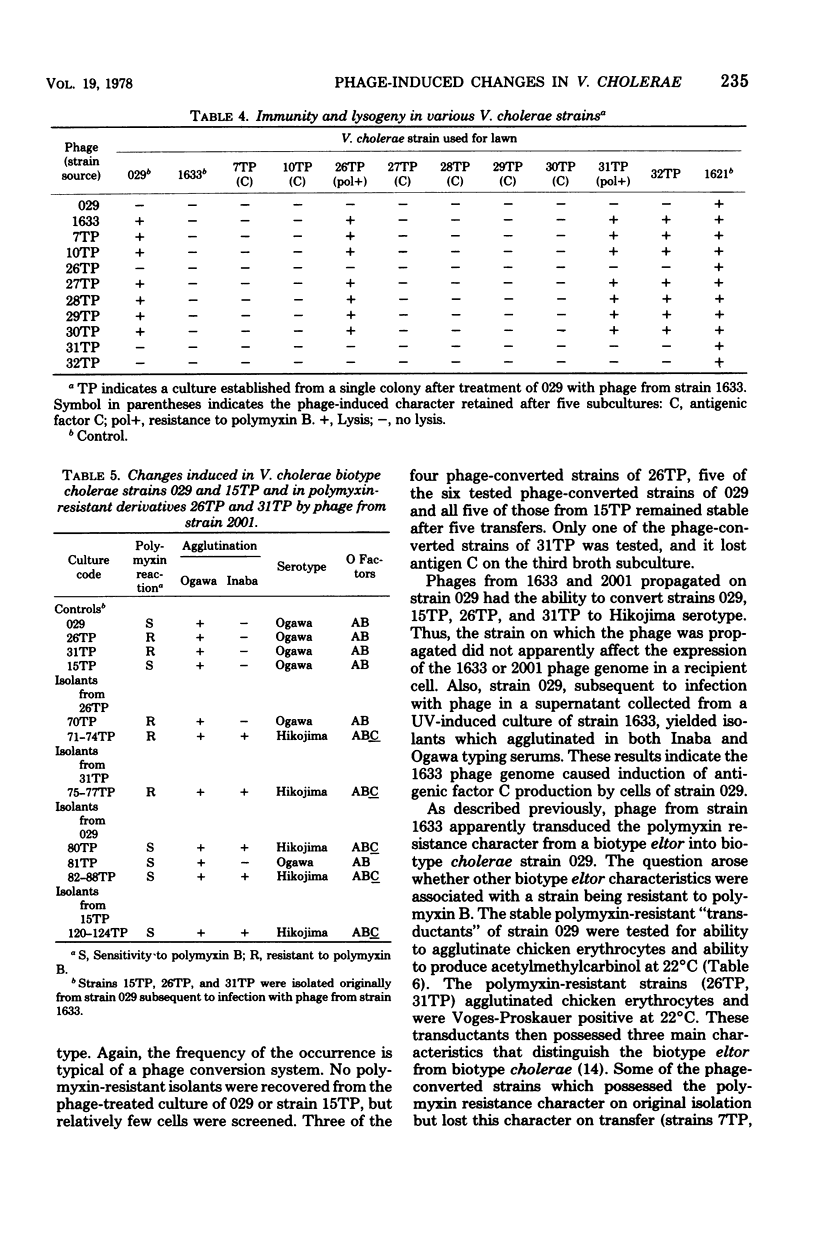
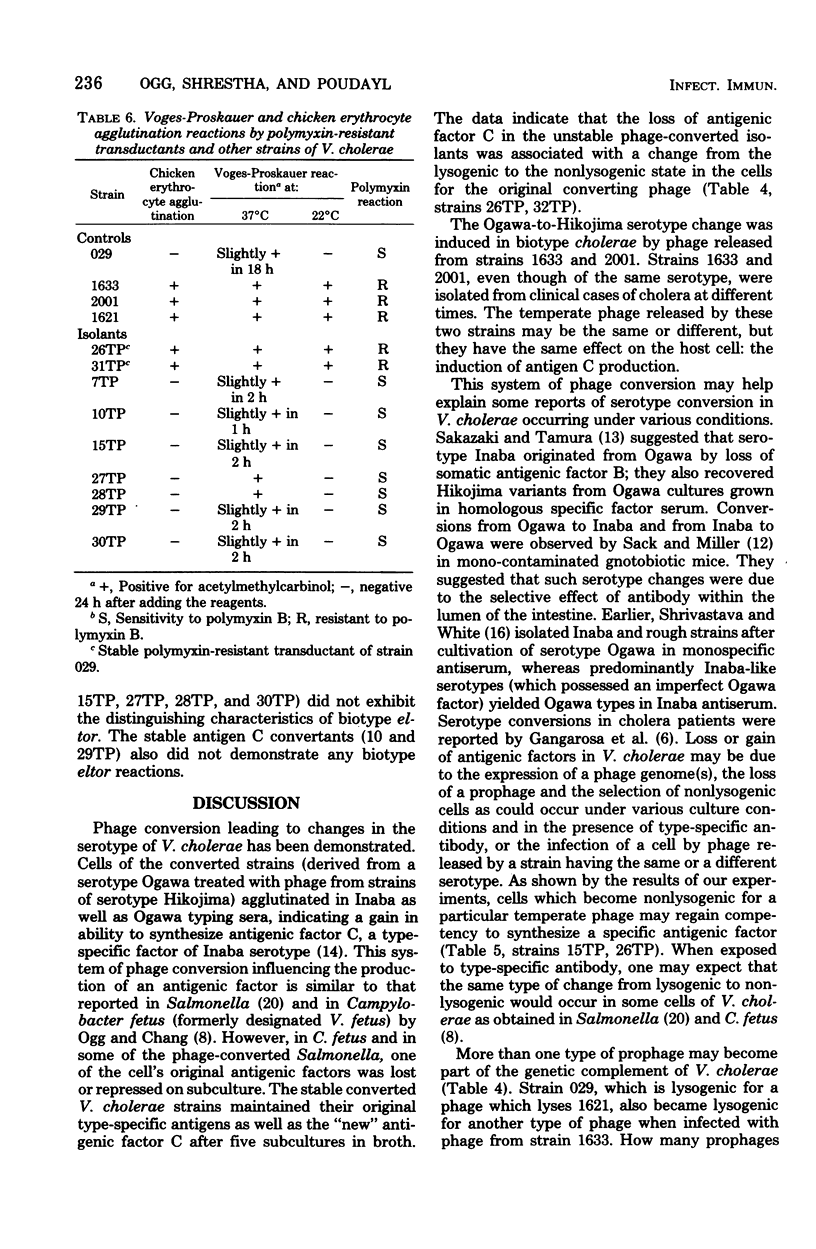
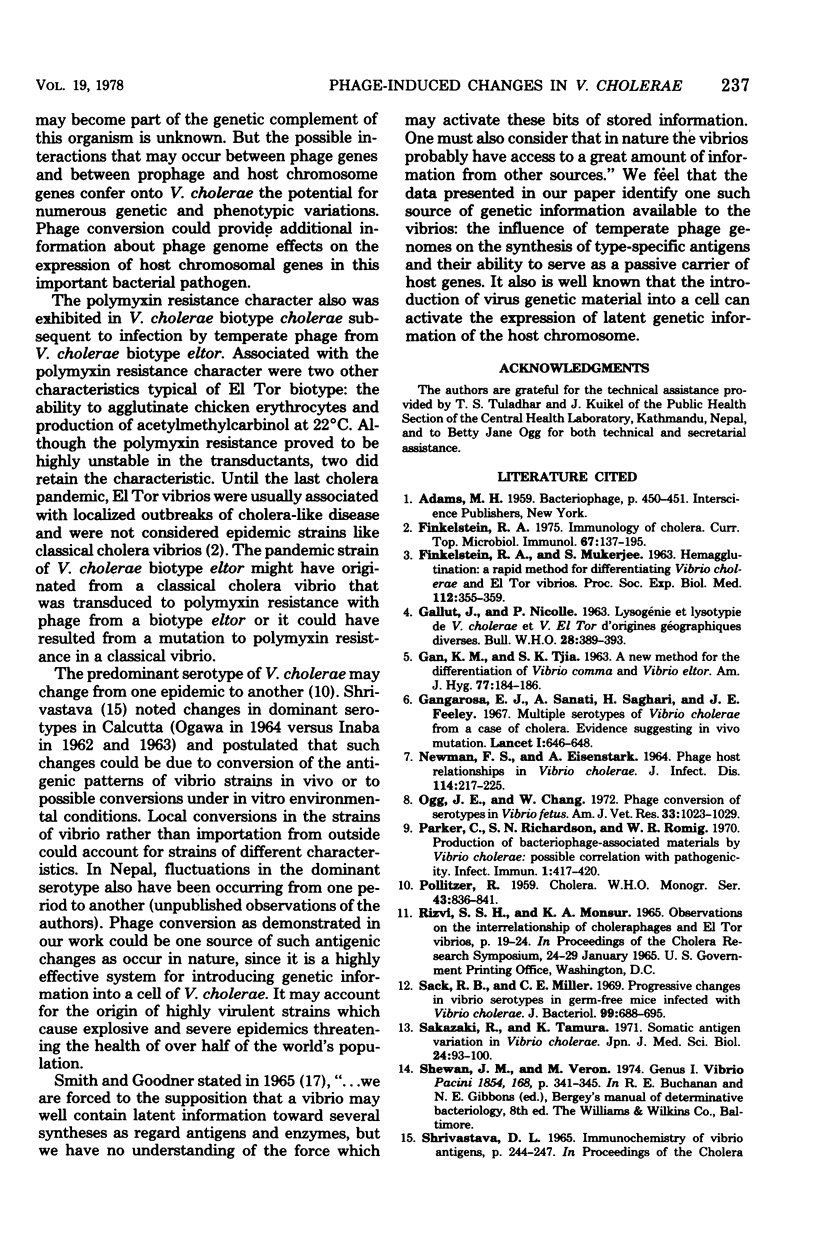

Selected References
These references are in PubMed. This may not be the complete list of references from this article.
- Gangarosa E. J., Sanati A., Saghari H., Feeley J. C. Multiple serotypes of vibrio cholerae isolated from a case of cholera. Evidence suggesting in-vivo mutation. Lancet. 1967 Mar 25;1(7491):646–648. doi: 10.1016/s0140-6736(67)92542-1. [DOI] [PubMed] [Google Scholar]
- HAN G. K., KHIE T. S. A new method for the differentiation of Vibrio comma and Vibrio El Tor. Am J Hyg. 1963 Mar;77:184–186. doi: 10.1093/oxfordjournals.aje.a120308. [DOI] [PubMed] [Google Scholar]
- NEWMAN F. S., EISENSTARK A. PHAGE-HOST RELATIONSHIPS IN VIBRIO CHOLERAE. J Infect Dis. 1964 Jun;114:217–225. doi: 10.1093/infdis/114.3.217. [DOI] [PubMed] [Google Scholar]
- Ogg J. E., Chang W. Phage conversion of serotypes in Vibrio fetus. Am J Vet Res. 1972 May;33(5):1023–1029. [PubMed] [Google Scholar]
- Parker C., Richardson S. H., Romig W. R. Production of Bacteriophage-Associated Materials by Vibrio cholerae: Possible Correlation with Pathogenicity. Infect Immun. 1970 Apr;1(4):417–420. doi: 10.1128/iai.1.4.417-420.1970. [DOI] [PMC free article] [PubMed] [Google Scholar]
- Sack R. B., Miller C. E. Progressive changes of Vibrio serotypes in germ-free mice infected with Vibrio cholerae. J Bacteriol. 1969 Sep;99(3):688–695. doi: 10.1128/jb.99.3.688-695.1969. [DOI] [PMC free article] [PubMed] [Google Scholar]
- Sakazaki R., Tamura K. Somatic antigen variation in Vibrio cholerae. Jpn J Med Sci Biol. 1971 Apr;24(2):93–100. doi: 10.7883/yoken1952.24.93. [DOI] [PubMed] [Google Scholar]
- TAKEYA K., SHIMODORI S. "PROPHAGE-TYPING" OF EL TOR VIBRIOS. J Bacteriol. 1963 Apr;85:957–958. doi: 10.1128/jb.85.4.957-958.1963. [DOI] [PMC free article] [PubMed] [Google Scholar]
- UETAKE H., LURIA S. E., BURROUS J. W. Conversion of somatic antigens in Salmonella by phage infection leading to lysis or lysogeny. Virology. 1958 Feb;5(1):68–91. doi: 10.1016/0042-6822(58)90006-0. [DOI] [PubMed] [Google Scholar]


